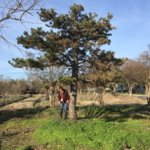Hbomb
Sapling
Hello, so I currently have a deposit down on about at 18ft tall by 16 wide JBP landscape specimen from a tree farm. It was collected/rescued about 4 years ago from the old Hank Haney golf course off 635 and been grown in its currently location about 4 years(picture attached).
I think it would look awesome in my backyard, but I am now thinking twice about it being able to survive. I became of the mindset JBPs are actually a pine that grows well in DFW clay soil(I actually have a young tree that I planted a couple years ago that’s growing great) but then heard younger trees will do better, so that’s not necessarily a great indication.
I know JBP do best in well draining soil, but my question is, will it tolerate clay not very well draining soil? It at least has been growing in Dallas for awhile now and probably has close feeder roots since being removed.
I get a 1 year warranty and have option pay 10% for another year. If it’s not going to survive should I know within the first year? Could it have a long slow death? Could it actually survive? Thanks
I think it would look awesome in my backyard, but I am now thinking twice about it being able to survive. I became of the mindset JBPs are actually a pine that grows well in DFW clay soil(I actually have a young tree that I planted a couple years ago that’s growing great) but then heard younger trees will do better, so that’s not necessarily a great indication.
I know JBP do best in well draining soil, but my question is, will it tolerate clay not very well draining soil? It at least has been growing in Dallas for awhile now and probably has close feeder roots since being removed.
I get a 1 year warranty and have option pay 10% for another year. If it’s not going to survive should I know within the first year? Could it have a long slow death? Could it actually survive? Thanks

